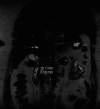Periampullary Diffuse Large B-Cell Lymphoma Presenting as Acute Pancreatitis
- PMID: 39552634
- PMCID: PMC11567703
- DOI: 10.14309/crj.0000000000001550
Periampullary Diffuse Large B-Cell Lymphoma Presenting as Acute Pancreatitis
Abstract
Periampullary malignancies are uncommon and encompass a wide variety of tumors. Early and accurate biopsy-proven diagnosis is important because different malignancy subtypes warrant different management and treatment plans. We present a unique and rare case of periampullary lymphoma, initially presenting as acute pancreatitis.
Keywords: acute pancreatitis; ampullary tumors; diffuse large B-cell lymphoma; periampullary lymphoma; tumor resection.
© 2024 The Author(s). Published by Wolters Kluwer Health, Inc. on behalf of The American College of Gastroenterology.
Figures




References
-
- Ross WA, Bismar MM. Evaluation and management of periampullary tumors. Curr Gastroenterol Rep. 2004;6(5):362–70. - PubMed
-
- Fernandez-Cruz L. Periampullary carcinoma. In: Holzheimer RG, Mannick JA. (eds.). Surgical Treatment: Evidence-Based and Problem-Oriented. Zuckschwerdt: Munich, Germany, 2001. - PubMed
-
- Buchbjerg T, Fristrup C, Mortensen MB. The incidence and prognosis of true duodenal carcinomas. Surg Oncol. 2015;24(2):110–6. - PubMed
Publication types
LinkOut - more resources
Full Text Sources

